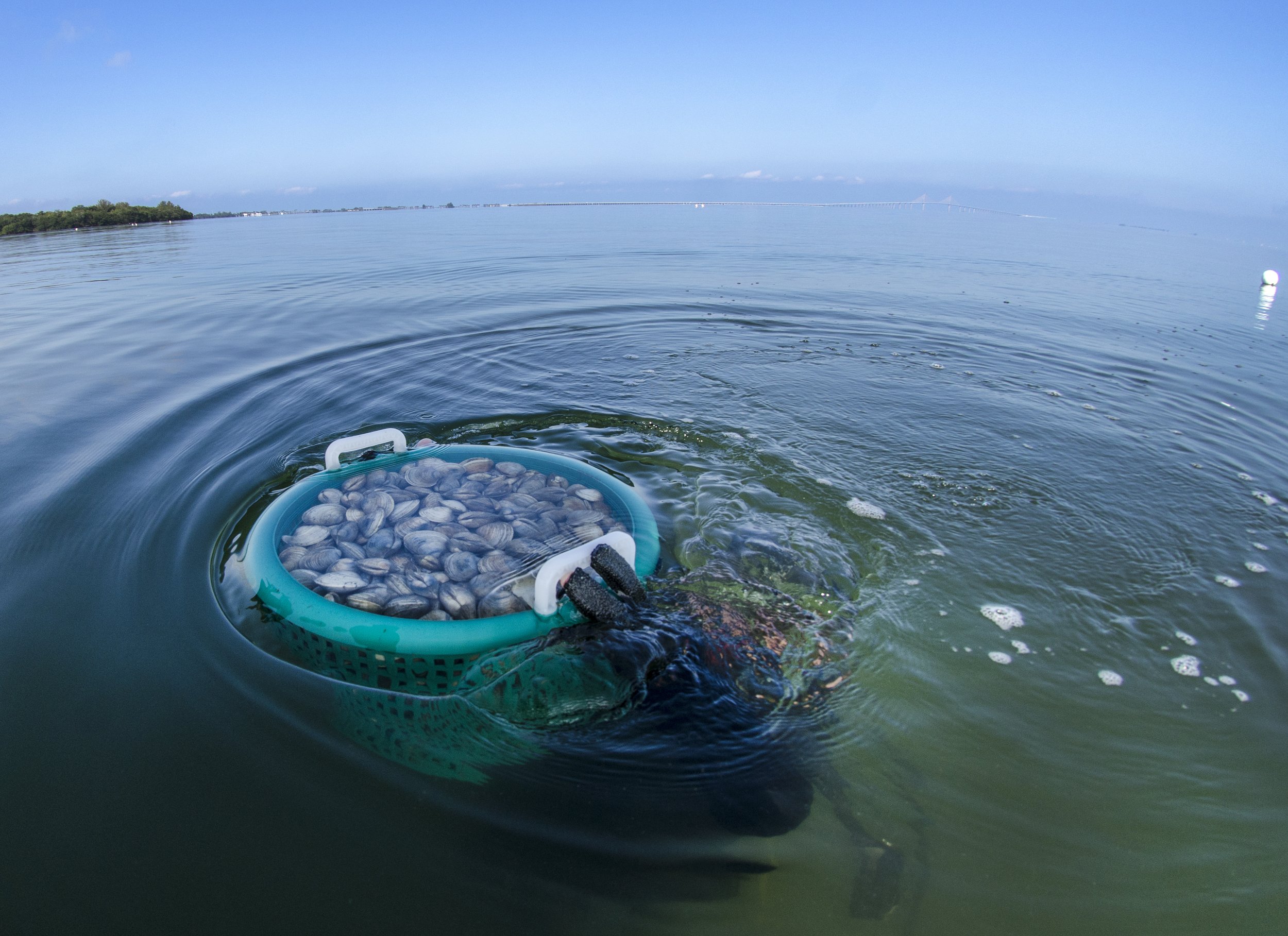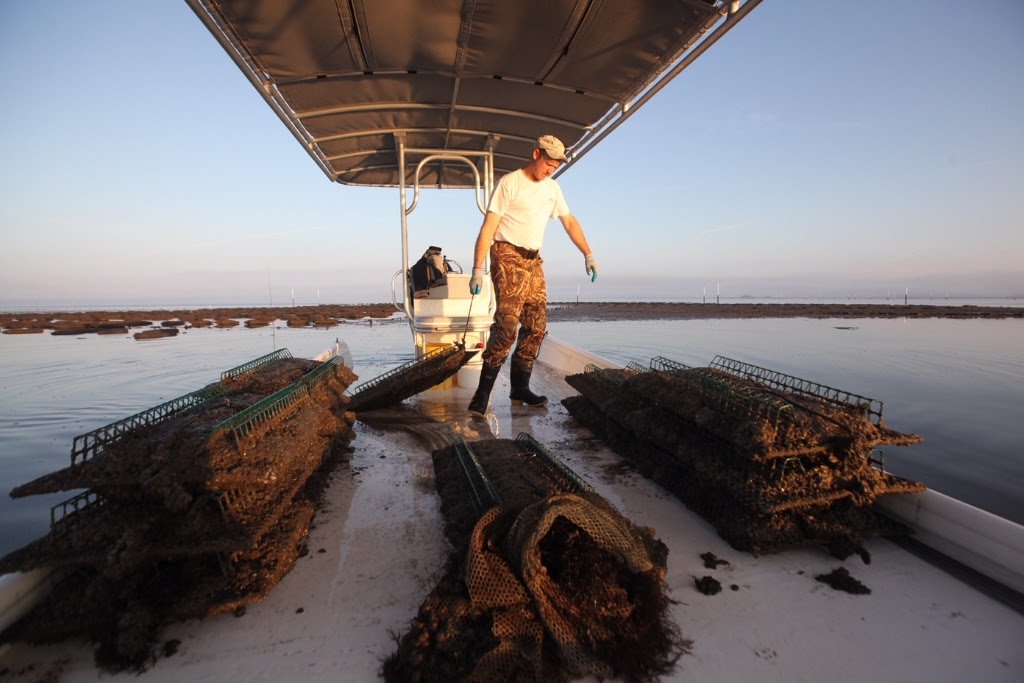
SHELLFISH BENEFIT COASTAL COMMUNITIES AND OUR ENVIRONMENT
A farmer tends to his oyster lease in North Florida. Oysters not only support livelihoods, but also connect Floridians to the rich cultural heritage of the Gulf coast the extends back centuries.
SHELLFISH SUPPORT LIVELIHOODS
According to the Florida Department of Agriculture and Consumer Services (FDACS), shellfish aquaculture totaled $15.5 million from 111 reporting operations in 2018, with Florida ranking 3rd and 6th in the nation for clam and oyster sales, respectively (FDACS 2020).
Shellfish aquaculture is also becoming increasingly necessary to meet seafood demand following the collapse of wild fisheries, such as the Apalachicola oyster industry. Increasing shellfish production via aquaculture will not only support resilient, working waterfronts, but also protect the cultural heritage tied to Gulf shellfish for generations to come.
SHELLFISH CLEAN OUR WATERS
Bivalve shellfish, like clams, oysters, and scallops, filter our waters by consuming microscopic algae and capturing suspended solids in our seawater. Removing phytoplankton and particulates improves water clarity and transfers nutrients from the pelagic to sediments below. A single 2 inch clam can filter an estimated 4.5 gallons of water per day (UF/IFAS 2015). In the video, UF/IFAS Shellfish Extension demonstrates the power of clam filtration, which cleans approximately 8 gallons of seawater in little over an hour. Florida clam growers have densities of ~2 million clams per acre on their leases.
“Littleneck” clams can filter an impressive amount of water and therefore improve local water clarity.
The Florida state-threatened American oystercatcher (Haematopus palliatus) lands on an oyster reef to feed. Oystercatchers require shell bars, sandy shoals, and barrier islands with little vegetation to roost and successfully fledge young. Photo: Walker Golder/Audubon
SHELLFISH SUPPORT MARINE ECOSYSTEMS
Oysters uniquely aggregate to form complex "reefs," which support crustaceans, mollusks, commercial and recreational finfish, as well as migratory wading birds (Grabowski et al. 2012, Vitale et al. 2021). Through a “fish eye” view of a red drum (Sciaenops ocellatus), we can see that this sport fish frequently visits oyster reefs.
Clams, mussels, and scallops also benefit seagrass by transferring nutrients to the seafloor and increasing local water clarity. The northern hard clam (Mercenaria mercenaria) has been shown to speed the recovery of seagrass following simulated disturbance (Donaher et al. 2021) and seagrass productivity with bivalve co-plantings (Peterson & Heck 2001, Wall et al. 2008, Carroll et al. 2008).


